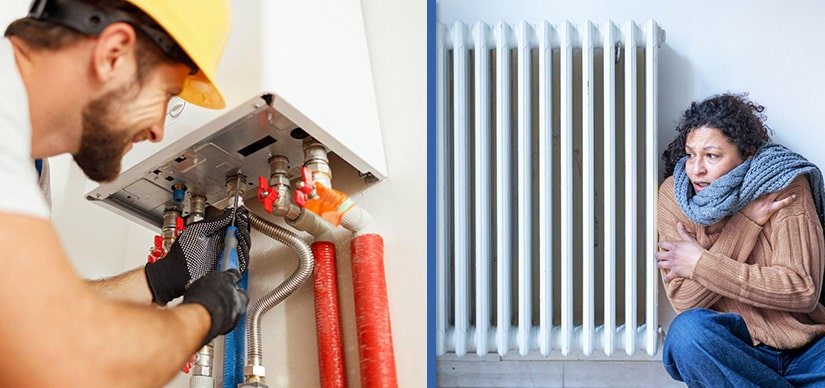How to Prepare Your Water Heater For The Winter Months
Views : 1294

In many areas of the country, it entails pulling out the covers and turning up the heat. However, there may need to be some house maintenance done first in order to keep you and your family warm. To ensure that your water heater lasts the entire season, you should especially get it ready for the coming cold water and get your water heater serviced by the best Water Heater Installation services in San Diego. Whether covering up their air conditioner, getting their furnace serviced, ensuring their attic has adequate insulation or putting snow tires on their car, the residents have a yearly ritual of getting ready for the harsh winter months. You really should respect the additional systems and work that need to be completed in your home, nonetheless.
Lower the water heater temperature to 120°F
Although some manufacturers set the water heater's thermostat at 140 degrees Fahrenheit, most homes only need 120 degrees to wash dishes, do laundry, and take showers. Without affecting your experience of hot water, lowering the temperature reduces energy use, lowers monthly costs, and decreases mineral development and corrosion in the water heater and pipes. This lower temperature setting aids in avoiding unintentional burns as well. Testing the temperature before and after adjusting is always a good idea, regardless of the sort of water heater you have.
You'll require:
- Thermometer to measure the temperature of the water (a regular at-home medical or meat thermometer will work).
- A sticker or other means of marking the thermostat's setting.
Check the owner's handbook of your water heater for instructions on how to adjust the thermostat before you begin or get the best services from Water Heater Repair in San Diego. On gas storage water heaters, the thermostat dial is often located at the bottom of the tank; on electric water heaters, it could be hidden behind a panel. Some systems come with an intuitive digital gauge.
Examine your pipes.
Traditional water heaters use insulation to help them heat water more effectively and maintain the proper temperature. However, both conventional and tankless water heaters need pipelines to transport water, which can dramatically reduce the temperature of the water, particularly in cold weather. The easy answer? Make careful you insulate your water heater and your pipes if you have a tanked system, but only the pipes if you have a tankless kind. When the temperature falls below thirty degrees, insulating the pipes helps prevent water from freezing. A basic pipe sleeve may frequently prevent pipes from freezing, despite the fact that it sounds complicated.
Using a tank flush, remove accumulated sediment.
When your hot water is on, popping sounds signify sediment buildup. You might connect a hose to the drain valve to rinse out the sediment, which may be a buildup of sand or soil. Fix the hose's end to the valve and place the other end so that the water drains outdoors. Restart the water supply to agitate and drain off the sediment. Up till the water flows clear, keep flushing it. Or, for $59*, schedule a service call, and our plumber provides services of Water Heater Repair in San Diego will flush the tank.
Inspect the location
While we don't propose moving your water heater about, we do advise double-checking its location. Specifically, is it in a heated area of your house? Numerous water heaters have been observed in chilly garages, drafty basements, and even outside storage sheds or closets. This could work in areas with mild winters and summers. However, they certainly aren't the ideal places if your region ever encounters colder weather. Alternatively, be sure to add more insulation to the heater and the pipes, or have your water heater built in a warm area of your house or workplace.
Clean it Up
Imagine never giving a glass a good wash and rinse. Even if you continue to use it, silt and accumulation will eventually form. That is, after all, what occurs in your water tank! Minerals found in water naturally might lead to silt accumulation. This sediment may be difficult on your tank and can decrease its efficiency, costing you more money each month on your energy bill. Water Heater Repair services in San Diego may be a helping hand for you to maintain your water heater. All you have to do is switch off your water heater, let it cool, connect a hose to the drain valve, and locate a location to let the water drain, like a pail or outside in the yard.
Check the pressure release valve.
It's a real pressure release valve for a water tank. Since winter is a season for burst pipes, it's a good idea to include this on your winter water heater checklist as it prevents your water tank from breaking. When you open it, you should hear water or a slight hiss. If you don't, a replacement must be made right away.
Maintain Insulation in the Tank
Additionally, if you want to get insulation for your water heater then get the best services from Water Heater Repair in San Diego. By surrounding yours with foil blankets, you can insulate it. Even though this is a straightforward task, you may save a lot of money on your heating expenses by using them, which are often obtainable at most hardware stores.
Insulating older tanks
Older tanks just aren't as efficient as modern tanks, and occasionally they're not as good at holding heat. It becomes increasingly tougher when the cold weather strikes. For your tank, you may buy fiberglass insulation "blankets" so that it stays warm and cozy and your morning shower is not compromised. Ensure that the blanket is not near the flue duct. If you reside in a home where pipes are vulnerable to freezing, it's a good idea to cover any exposed pipes with pipe insulation.
To ensure a clear oxygen supply and exhaust, vent your system.
Clear vents and unhindered exhausts are necessary for the water heater's effective oxygen intake and CO2 discharge. If the heater doesn't already have metal mesh shields or covers, ask our plumber at water heater installation San Diego to install them. Also, clear out any obstructions brought on by leaves, dust, dirt, or animals.
Place the hot water heater where it belongs.
The greatest choice in colder climates is for your plumber to put tanks somewhere warm inside that will lessen the effects of chilly external temps.
Examine the anode rod.
Sediment buildup in your tank and the anode rod go hand in hand. Its function is to gather any corrosive substances in the water that could erode away at the tank liner. Consider it as a magnet that draws such materials away from the tank's edges. An anode rod is subjected to corrosive elements constantly, which wears it down over time. Tankless Water Heater Repair services in San Diego help you to keep your water heater tested and serviced periodically by a professional if it is older than two to three years. It will be replaced if it is less than 1/2 inch thick, has missing sections, or is covered in calcium.
For sustained hot water efficiency, and safety, and to extend the lifespan of your water heater, then the expert from the Water Heater Installation company in San Diego. Before the winter weather arrives, you should do a plumbing check and include a water heater servicing on the list.
